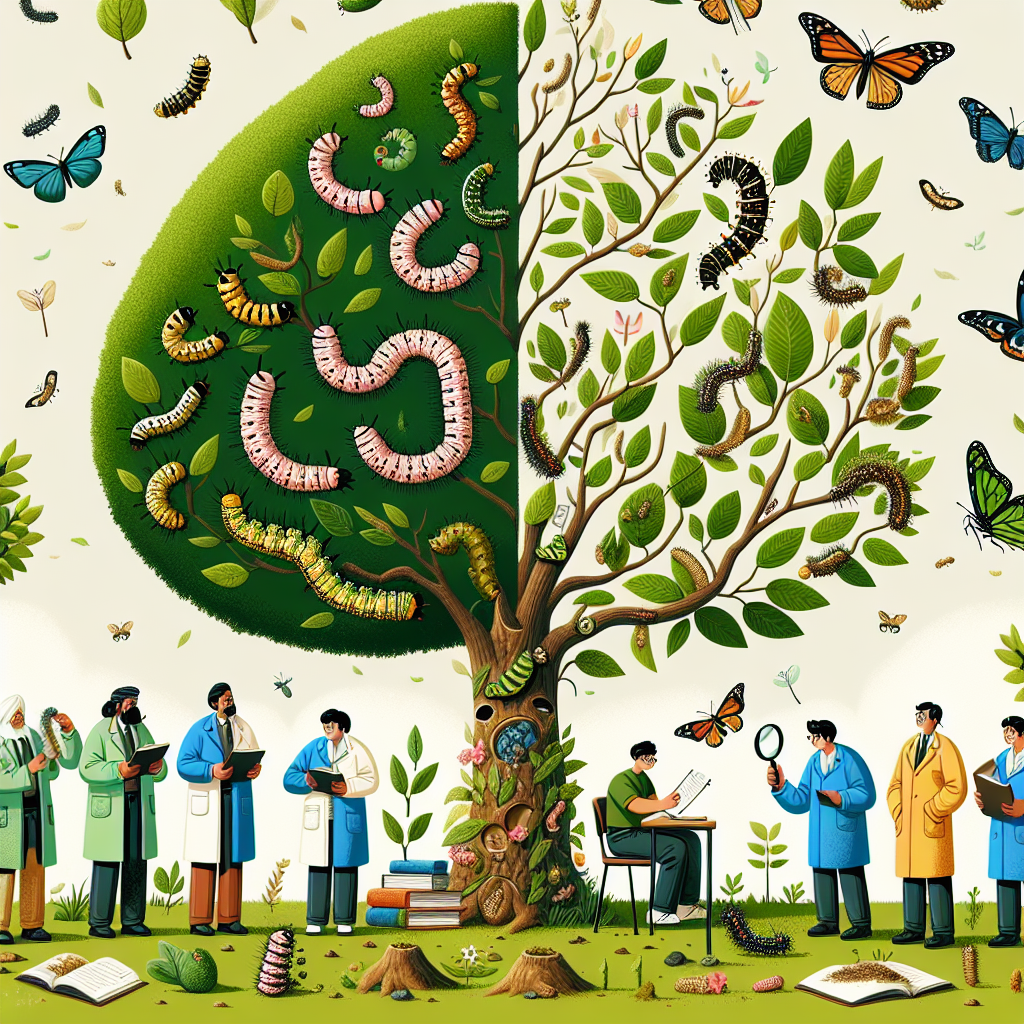Understanding the Impact of Caterpillars on Trees
Caterpillars are more than just potential butterflies or moths in waiting. They play a vital role in our backyard ecosystems, yet can also have a significant impact on the trees they inhabit. In this comprehensive guide, we’ll explore the dual nature of caterpillars on trees and how you, the keen gardener, can manage their presence to benefit your outdoor space.
The Caterpillar Connection: A Bittersweet Symphony
When we think of caterpillars, it’s often with a sense of wonder at the natural world’s cycles. After all, these wriggly creatures are destined to transform into some of the most enchanting insects we know: butterflies and moths. But the relationship between caterpillars and trees is nuanced and can sway from symbiotic to parasitic.
The Good: Nature’s Pruners
In one aspect, caterpillars act as nature’s pruners. They help in regulating vegetative growth and can encourage the flowering and fruiting in some plant species. Studies from the University of Washington’s Biology Department suggest that light, targeted leaf consumption by caterpillars can stimulate a tree’s growth and lead to a more robust plant (University of Washington).
The Bad: Defoliation and Stress
However, things can turn sour when caterpillar populations explode. Defoliation is the most visible and impactful effect of a large caterpillar presence. Though most healthy trees can withstand moderate defoliation, Cornell University’s College of Agriculture and Life Sciences highlights that severe or repeated defoliation can stress trees, making them susceptible to diseases and reducing their lifespan (Cornell University).
Identifying the Culprits
Understanding which caterpillars are causing the issue is the first step. The size, color, and feeding patterns can help identify the species. Some, like the Gypsy Moth caterpillars, are notorious for their voracious appetite and widespread tree damage. Other species, however, may only target specific trees or cause little overall harm.
Look for Patterns
Observe the type of foliage caterpillars are consuming. Oak, birch, and apple trees tend to be more susceptible to caterpillar infestations. If you notice a pattern or particular tree species being affected in your backyard, this could be a signifier of the caterpillar species at play.
Managing Caterpillar Populations
1. Manual Removal
One of the most straightforward methods of control is to manually remove caterpillars from affected trees – donning gloves and gently picking them off. This can be time-consuming but it’s an immediate solution. For those larger trees or severe infestations, you might want to consider an insecticide.
2. Biological Control
Introducing natural predators, such as birds or beneficial insects like parasitoid wasps, can help control caterpillar numbers. A bird feeder or a birdhouse can encourage feathered friends who will feast on these insects (Audubon Society). Likewise, parasitoid wasps are commercially available and can be introduced to your garden to specifically target caterpillar populations.
3. Bt (Bacillus thuringiensis) Treatment
Bt is a naturally occurring bacterium that produces toxins harmful to caterpillars. It’s widely considered safe for other wildlife, humans, and pets. You can find Bt-based products in your local garden center or online. Garden Safe Bt Worm & Caterpillar Killer is one popular and effective option.
4. Chemical Controls
For severe infestations where other methods fail, chemical insecticides might be necessary. Selective insecticides target caterpillars without harming other insects. Ensure to follow the label directions closely and consider the impact on beneficial insects and the environment before deciding on this route.
Cultivating a Balanced Backyard Ecosystem
Creating a balanced ecosystem in your garden can keep caterpillar numbers in check. Companion planting and diversified planting strategies can discourage large populations from settling in. By cultivating a variety of plant species, you’ll promote a healthy environment that supports a range of wildlife, thus keeping any one insect population from dominating (Missouri Botanical Garden).
When To Tolerate Caterpillars
Not all caterpillar activity should be cause for concern. A few nibbled leaves are often a small price to pay for the rich tapestry of life that comes from having butterflies and moths in your garden. Remember, these insects are vital pollinators and a beautiful addition to any outdoor space.
In summary, caterpillars can both enhance and challenge the health of trees in our backyards. Understanding the impact these creatures have can influence how we approach our garden care. By identifying the species involved, and implementing a mix of management strategies, we can protect our trees while fostering a diverse and resilient ecological tapestry that benefits all kinds of backyard life. Remember to take action with care, respecting the delicate balance that nurtures the creatures we cherish, and the trees that give them refuge.

